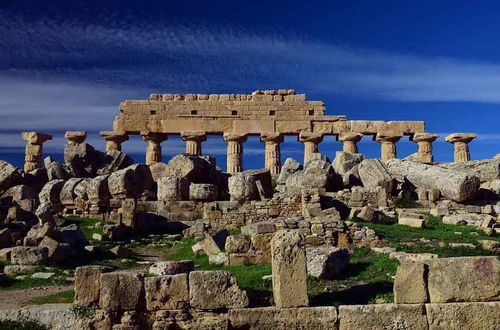FOR AGES 7 YEARS TO 11 YEARS
The Ancient Roman military were fearsome, and had a ferocious army in the 1st century AD that was disciplined and effective.
For KS2, it is essential for kids to know about the armour a Roman soldier would wear, how it was useful and its features. This will ground their knowledge in historical facts and open their eyes to different worlds!
The Ancient Romans were known for their highly-skilled army that moved in strict formation on the battlefield, well-equipped for anything. For this reason, they had to ensure their armour was resilient, strong and tough to protect them from being wounded.
The first type of Roman armour used was the lorica segmentata. It was made in a hooped metal arrangement. The lorica segmentata armour was used primarily in the early Roman Empire and was perfect because it was compact, making it easy to store.
There were two types of soldier in the Roman Army: the roman legionary and the auxiliaries. The legionaries were the very best soldiers and the auxiliaries were actually non-Roman citizens.
Legionaries wore an undershirt made of linen and a woollen tunic. The linen helped the soldiers to stay cool while the wool helped to trap heat, keeping the soldiers warm.
To protect their heads from arrows, swords and injury they also wore Cassis-helmets. These were metal, with cheek pieces to cover most of their face. On the front of the helmet is a 3" rim that protrudes out to protect the forehead. These features of the helmet help to protect the soldier's skull from sword blows, arrows and injury.

Like the helmets, the Romans wore metallic body armour that protected their flesh from being wounded. For the most effective protection, the armour was made up of overlapping iron strips. The overlapping strips allowed for swifter movement. These strips were fastened with laces and hooks, and were hinged on at the back for maximum strength. This allows for flexibility so the solider can bend and move. To cover all of the soldier's body, metal plates protected their back and front. For their shoulders, metal pieces curved round their shoulders, protecting them from sword blows.
The second type of armour is known as lorica hamata, used during the Roman Republic. This armour was worn by both legionaries (primary) and auxilary (secondary) soldiers. Lorica hamata was a type of chain mail armour, where lots of small interlocking metal rings linked together. Mail was durable and took months to construct, however a single shirt lasted for decades, making it sustainable and reliable.
The last type of Roman armour used was the lorica squamata. This was made of scaled metal plates that look like the skin of a fish. A fabric shirt provided the base for this armour where hundreds of iron or bronze metal plates were sewn into the shirt. Unlike the other two armours, this uniform was light and flexible as the metal was never thicker than 0.8mm. The overlapping plates provided the material with enough strength and resistance.
Roman soldier armour was useful because it covered most of the body through roman breastplate, leather straps, chain mail armour and heavy metallic material. This also prevented deadly sword blows to the body. The Roman army uniform is known for its consistency, resilience and protection. Although Roman armour was known for its uniformity, often roman soldiers could add to their uniform. This meant that richer soldiers would buy their own gear to use and embellish their armour.

Due to the materials used in Roman infantry, the armour worn was very heavy. However, lorica squamata was lighter and more flexible. Whereas lorica segmentata, although heavier, was easy to pack up and more resistant. It is considered the most protective for the Roman legionary and is the most expensive. The lorica hamata, like lorica segmentata, was very heavy and uncomfortable for the Roman legions. This is because the weight was distributed unevenly, so the stress falls mainly on the shoulders. It was clever for roman soldiers to have different uniform as each battle varies in needs and resources.
How many uniforms did the Roman Army use?
Which was the most flexible and lightweight Roman armor?
The lorica squamata armour looked like the skin of a what?
What type of armour was the lorica hamata?
Why was lorica segmentata so useful?
Read The Disclaimer
At Kidadl we pride ourselves on offering families original ideas to make the most of time spent together at home or out and about, wherever you are in the world. We strive to recommend the very best things that are suggested by our community and are things we would do ourselves - our aim is to be the trusted friend to parents.
We try our very best, but cannot guarantee perfection. We will always aim to give you accurate information at the date of publication - however, information does change, so it’s important you do your own research, double-check and make the decision that is right for your family.
Kidadl provides inspiration to entertain and educate your children. We recognise that not all activities and ideas are appropriate and suitable for all children and families or in all circumstances. Our recommended activities are based on age but these are a guide. We recommend that these ideas are used as inspiration, that ideas are undertaken with appropriate adult supervision, and that each adult uses their own discretion and knowledge of their children to consider the safety and suitability.
Kidadl cannot accept liability for the execution of these ideas, and parental supervision is advised at all times, as safety is paramount. Anyone using the information provided by Kidadl does so at their own risk and we can not accept liability if things go wrong.
Kidadl is independent and to make our service free to you the reader we are supported by advertising.
We hope you love our recommendations for products and services! What we suggest is selected independently by the Kidadl team. If you purchase using the buy now button we may earn a small commission. This does not influence our choices. Please note: prices are correct and items are available at the time the article was published.
Kidadl has a number of affiliate partners that we work with including Amazon. Please note that Kidadl is a participant in the Amazon Services LLC Associates Program, an affiliate advertising program designed to provide a means for sites to earn advertising fees by advertising and linking to amazon.
We also link to other websites, but are not responsible for their content.
Was this article helpful?



Browse Category



We’ll send you tons of inspiration to help you find a hidden gem in your local area or plan a big day out.



Check your inbox for your latest news from us. You have subscribed to:
Remember that you can always manage your preferences or unsubscribe through the link at the foot of each newsletter.